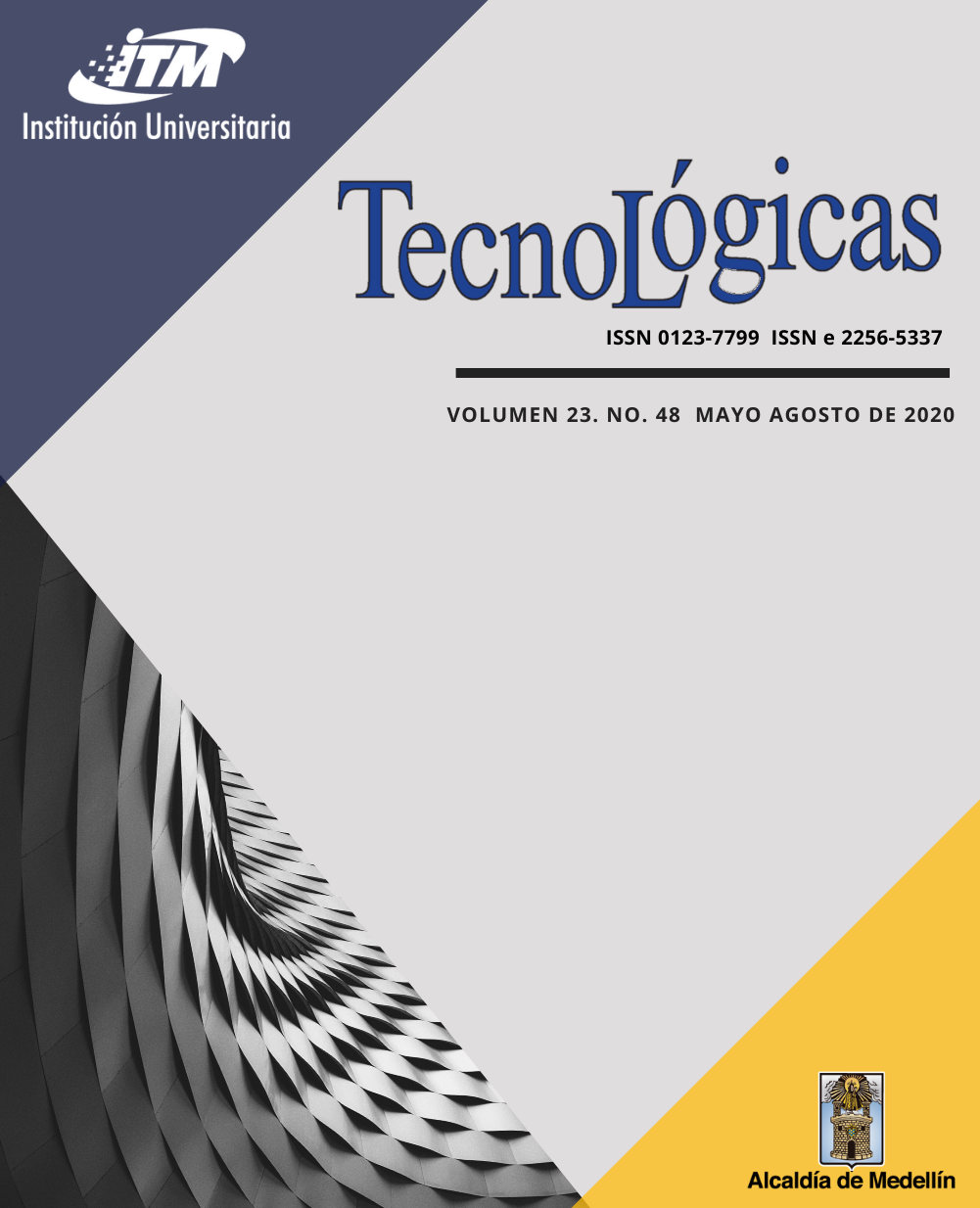Análisis por confiabilidad de la estabilidad de muros de pilas excavadas considerando las incertidumbres de los parámetros
Resumen
En ingeniería geotécnica, la estabilidad de muros de pilas excavadas es evaluada mediante métodos de diseño determinísticos que se basan en el uso de factores de seguridad para establecer un margen para la falla. En los últimos años, se han adoptado métodos de diseño basados en la confiabilidad para involucrar la incertidumbre en la evaluación de la estabilidad de los muros, así como para el cálculo de la profundidad de empotramiento factible para los muros. En este estudio, se aplica un enfoque de diseño basado en la confiabilidad ampliada para desarrollar análisis paramétricos de la estabilidad de un muro de pilas excavadas, junto con un análisis de elementos finitos. En el marco del diseño por estado límite de servicio, los resultados indican que la cohesión del suelo y el nivel freático son factores que afectan significativamente la estabilidad del muro. Una alta variabilidad en el rango de cohesión causa una gran variabilidad en la incertidumbre para determinar la profundidad de empotramiento del muro. La profundidad de empotramiento factible puede alcanzar 4 veces la altura libre considerando el coeficiente de variación máximo (50 %) de la cohesión del suelo. Por otro lado, cuando el nivel freático se ubica en la superficie del terreno retenido, el desplazamiento horizontal del extremo superior del muro alcanza 15.2 mm, equivalente a 0.0038 veces la altura libre del muro, para el cual el suelo alcanza a movilizar los empujes activos. También se encontró que la resolución de los resultados probabilísticos está altamente influenciada por el número de iteraciones en las simulaciones de Monte Carlo.
Referencias bibliográficas
Asociación Colombiana de Ingeniería Sísmica (AIS), “Reglamento Colombiano de Construcción Sísmo Resistente (NSR-10).” Ministerio de Ambiente, Vivienda y Desarrollo Territorial, Bogotá, D.C., Colombia, 2010. Disponible en: https://www.idrd.gov.co/sitio/idrd/sites/default/files/imagenes/titulo-a-nsr-100.pdf
D.-Q. Li, K.-B. Shao, Z.-J. Cao, X.-S. Tang, and K.-K. Phoon, “A generalized surrogate response aided-subset simulation approach for efficient geotechnical reliability-based design,” Comput. Geotech., vol. 74, pp. 88–101, Apr. 2016. https://doi.org/10.1016/j.compgeo.2015.12.010
Y. Wang, “MCS-based probabilistic design of embedded sheet pile walls,” Georisk, vol. 7, no. 3, pp.151–162, Mar. 2013. https://doi.org/10.1080/17499518.2013.765286
R. J. Bathurst, P. Lin, and T. Allen, “Reliability-based design of internal limit states for mechanically stabilized earth walls using geosynthetic reinforcement,” Can. Geotech. J., vol. 56, no. 6, pp. 774–788, Jun. 2019. https://doi.org/10.1139/cgj-2018-0074
Z.-J. Cao, X. Peng, D.-Q. Li, and X.-S. Tang, “Full probabilistic geotechnical design under various design scenarios using direct Monte Carlo simulation and sample reweighting,” Eng. Geol., vol. 248, no. 8, pp. 207–219, Jan. 2019. https://doi.org/10.1016/j.enggeo.2018.11.017
E. F. García-Aristizábal, E. V. Aristizabal-Giraldo, R. J. Marín Sánchez, and J. C. Guzman-Martinez, “Implementación del modelo TRIGRS con análisis de confiabilidad para la evaluación de la amenaza a movimientos en masa superficiales detonados por lluvia,” TecnoLógicas, vol. 22, no. 44, pp. 111–129, Jan. 2019. https://doi.org/10.22430/22565337.1037
Z. Q. Xiao, J. Huan, Y. J. Y. Wang, C. Xu, and H. Xia, “Random Reliability Analysis of Gravity Retaining Wall Structural System,” in 2014 International Conference on Mechanics and Civil Engineering (icmce-14), Dec. 2014. https://doi.org/10.2991/icmce-14.2014.36
B. Hu, Z. Luo, C. L. Ho, and Y. Wang, “Efficient Reliability-Based Design Tool for Reinforced Earth Retaining Walls of Heavy Haul Railway Considering Internal Failure Modes,” in 2018 Joint Rail Conference, Pennsylvania, 2018. https://doi.org/10.1115/JRC2018-6110
P. Zeng, T. Li, R. Jimenez, X. Feng, and Y. Chen, “Extension of quasi-Newton approximation-based SORM for series system reliability analysis of geotechnical problems,” Eng. Comput., vol. 34, no. 2, pp. 215–224, Aug. 2018. https://doi.org/10.1007/s00366-017-0536-8
R. J. Marín, J. C. Guzmán-Martínez, H. E. Martínez Carvajal, E. F. García-Aristizábal, J. D. Cadavid-Arango, and P. Agudelo-Vallejo, “Evaluación del riesgo de deslizamientos superficiales para proyectos de infraestructura: caso de análisis en vereda El Cabuyal,” Ing. y Cienc., vol. 14, no. 27, pp. 153–177, Jun. 2018. https://doi.org/10.17230/ingciencia.14.27.7
G.-H. Gao, D.-Q. Li, Z.-J. Cao, Y. Wang, and L. Zhang, “Full probabilistic design of earth retaining structures using generalized subset simulation,” Comput. Geotech., vol. 112, pp. 159–172, Aug. 2019. https://doi.org/10.1016/j.compgeo.2019.04.020
W. Dong, “A Reliability Study of a Retaining Wall Design with Seismic Loads,” in Geo-Congress 2020: Engineering, Monitoring, and Management of Geotechnical Infrastructure, Minneapolis, 2020, pp. 543–551. https://doi.org/10.1061/9780784482797.052
K. K. Phoon and J. Ching, “Semi-probabilistic reliability-based design,” in Reliability of Geotechnical Structures in ISO2394, K. K. Phoon and J. V. Retief, Eds. London: CRC Press, 2016, pp. 160–192.
Y. Wang, T. Schweckendiek, W. Gong, T. Zhao, and K.-K. Phoon, “Direct probability-based design methods,” in Reliability of Geotechnical Structures in ISO2394, K.K. Phoon & J.V. Retief, Ed. London: CRC Press, 2016, pp. 194–226. Disponible en: https://www.routledge.com/Reliability-of-Geotechnical-Structures-in-ISO2394/Phoon-Retief/p/book/9781138029118
K. K. Phoon, F. H. Kulhawy, and M. D. Grigoriu, “Reliability-based design for transmission line structure foundations,” Comput. Geotech., vol. 26, no. 3–4, pp. 169–185, Apr. 2000. https://doi.org/10.1016/S0266352X(99)00037-3
J. C. Viviescas, J. P. Osorio, and J. E. Cañón, “Reliability-based designs procedure of earth retaining walls in geotechnical engineering,” Obras y Proy., no. 22, pp. 50–60, Dec. 2017. http://dx.doi.org/10.4067/S071828132017000200050
Z. J. Cao, Y. Wang, D. Li “Practical reliability analysis and design by Monte Carlo Simulation in spreadsheet,” in Risk and reliability in geotechnical engineering, K.-K. Phoon and J. Ching, Eds. London: CRC Press, 2014, pp. 301–335. https://doi.org/10.1007/978-3-662-52914-0_7
G. B. Baecher and J. T. Christian, Reliability and statistics in geotechnical engineering. John Wiley & Sons Ltd, 2003.
International Organization for Standardization, “ISO2394:2015. General Principles on Reliability for Structures.” Geneva, 2015. Available: https://www.iso.org/obp/ui/#iso:std:iso:2394:ed-4:v1:en
CEN, “Eurocode 7 Geotechnical design. Part 1: General rules. EN1997:2004.” European Commitee for Standardization, Brussels, 2004. Available: https://geotechnicaldesign.info/ec7p1.html
B. K. Low and K. K. Phoon, “Reliability-based design and its complementary role to Eurocode 7 design approach,” Comput. Geotech., vol. 65, pp. 30–44, Apr. 2015. https://doi.org/10.1016/j.compgeo.2014.11.011
K. K. Phoon and J. V. Retief, Reliability of geotechnical structures in ISO2394. London, UK.: CRC Press, 2016.
K. K. Phoon, “Role of reliability calculations in geotechnical design,” Georisk, vol. 11, no. 1, pp. 4–21, Dec. 2016. https://doi.org/10.1080/17499518.2016.1265653
Asociación Colombiana de Ingeniería Sísmica (AIS), “Norma colombiana de diseño de puentes (CCP-14).” INVIAS, Bogotá, D.C., Colombia, 2014. Available: https://www.invias.gov.co/index.php/archivo-y-documentos/documentos-tecnicos/3709-norma-colombiana-de-diseno-de-puentes-ccp14
A. V. D. Bica and C. R. I. Clayton, “Limit equilibrium design methods for free embedded cantilever walls in granular soils,” Proc. Inst. Civ. Engrs., vol. 86, pp. 879–898, Oct. 1989. Available: https://trid.trb.org/view/313696
B. J. Hansen, “Earth pressure and water pressure” ,” in Part II Actions And materal Strength, chapter 5 Earth Pressure And Water Pressure The institution of danish civil engineers: Copenhagen, 1953. Available: http://ocdi.or.jp/tec_st/tec_pdf/tech_271_311.pdf
V. N. S. Murthy, Geotechnical engineering: principles and practices of soil mechanics and foundation enginerring. New York: Marcel Dekker, Inc, 2002.
Z. H. Mazindrani and M. H. Ganjali, “Lateral Earth Pressure Problem of Cohesive Backfill with Inclined Surface,” J. Geotech. Geoenvironmental Eng., vol. 123, no. 2, pp. 110–112, Feb. 1997. https://doi.org/10.1061/(ASCE)1090-0241(1997)123:2(110)
Y. Wang, “Reliability-based design of spread foundations by Monte Carlo simulations,” Géotechnique, vol. 61, no. 8, pp. 677–685, Aug. 2011. https://doi.org/10.1680/geot.10.P.016
Y. Wang, S. K. Au, and F. H. Kulhawy, “Expanded Reliability-Based Design Approach for Drilled Shafts,” J. Geotech. Geoenvironmental Eng., vol. 137, no. 2, pp. 40–150, Jan. 2011. https://doi.org/10.1061/(ASCE)GT.1943-5606.0000421
Z.-J. Cao and Y. Wang, “Practical Reliability-based Design of Deep Foundations Using Subset Simulation,” in Second International Conference on Vulnerability and Risk Analysis and Management (ICVRAM) and the Sixth International Symposium on Uncertainty, Modeling, and Analysis (ISUMA), Liverpool, 2014, pp. 2032–2042. https://doi.org/10.1061/9780784413609.204
A. H.-S. Ang and W. H. Tang, Probability Concepts in Engineering: Emphasis on Applications in Civil & Environmental Engineering, 2nd ed. New York: Wiley, 2007.
R. J. Marin and Á. J. Mattos, “Physically-based landslide susceptibility analysis using Monte Carlo simulation in a tropical mountain basin,” Georisk Assess. Manag. Risk Eng. Syst. Geohazards, pp. 1–14, Jun. 2019. https://doi.org/10.1080/17499518.2019.1633582
A. Gaba, S. Hardy, L. Doughty, W. Powrie, and D. Selemetas, Guidance on embedded retaining wall design (CIRIA Report C76O). London: CIRIA, 2017.
K. K. Phoon, Reliability-based design in geotechnical engineering: computations and applications. CRC Press, 2008.
K. K. Phoon and J. Ching, Risk and reliability in geotechnical engineering. CRC Press, 2017.
A. Gaba, B. Simpson, W. Powrie, and D. Breadman, Embedded retaining walls: guidance for economical design (CIRIA Report C580). London: CIRIA, 2003.
Ö. Bilgin, “Numerical studies of anchored sheet pile wall behavior constructed in cut and fill conditions,” Comput. Geotech., vol. 37, no. 3, pp. 399–407, Apr. 2010. https://doi.org/10.1016/j.compgeo.2010.01.002
Á. J. Mattos, “Reliability analysis of cantilever bored-pile walls,” (Master’s Thesis) University of Antioquia. 2019. Available: https://www.researchgate.net/publication/335004832_Reliability_analysis_of_cantilever_bored-pile_walls_in_Spanish
Descargas
| Estadísticas de artículo | |
|---|---|
| Vistas de resúmenes | |
| Vistas de PDF | |
| Descargas de PDF | |
| Vistas de HTML | |
| Otras vistas | |









